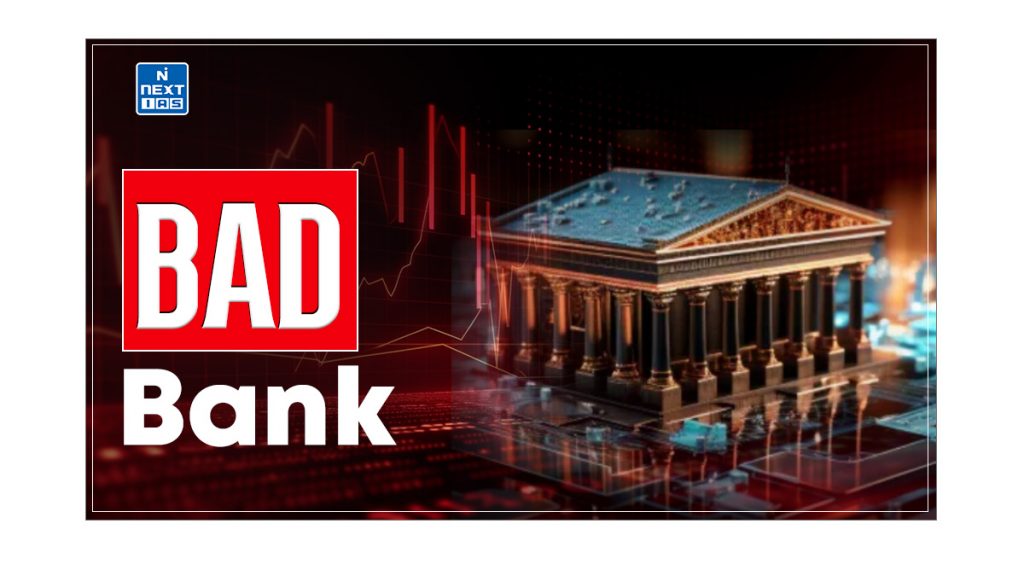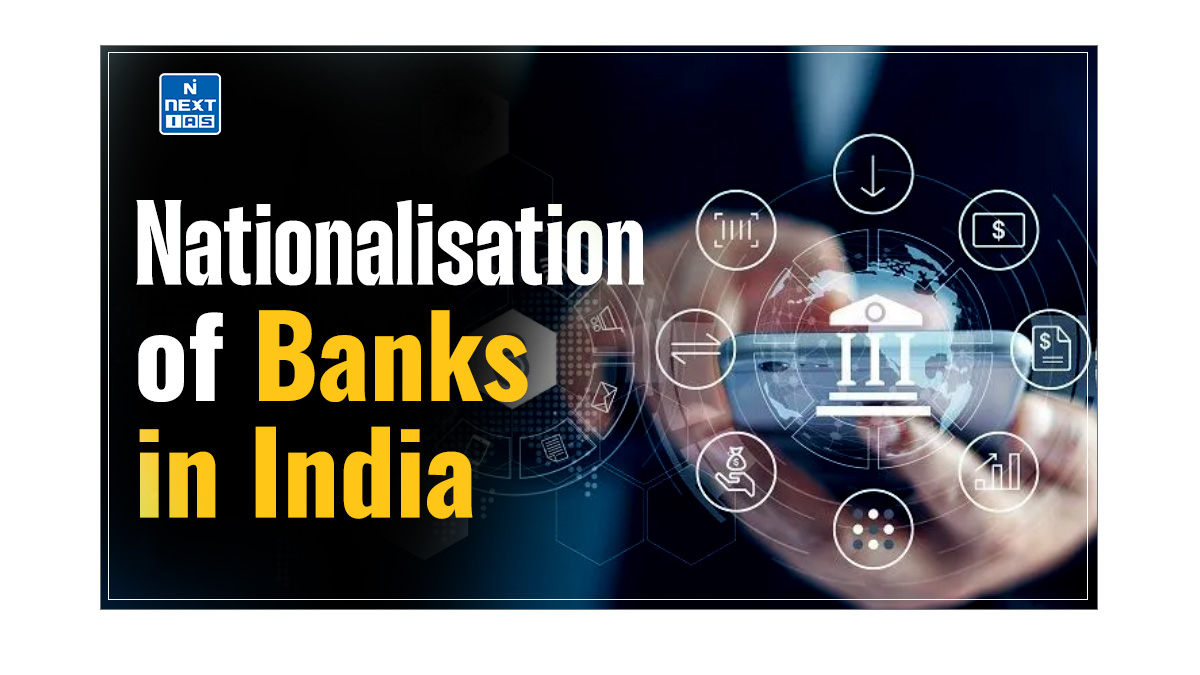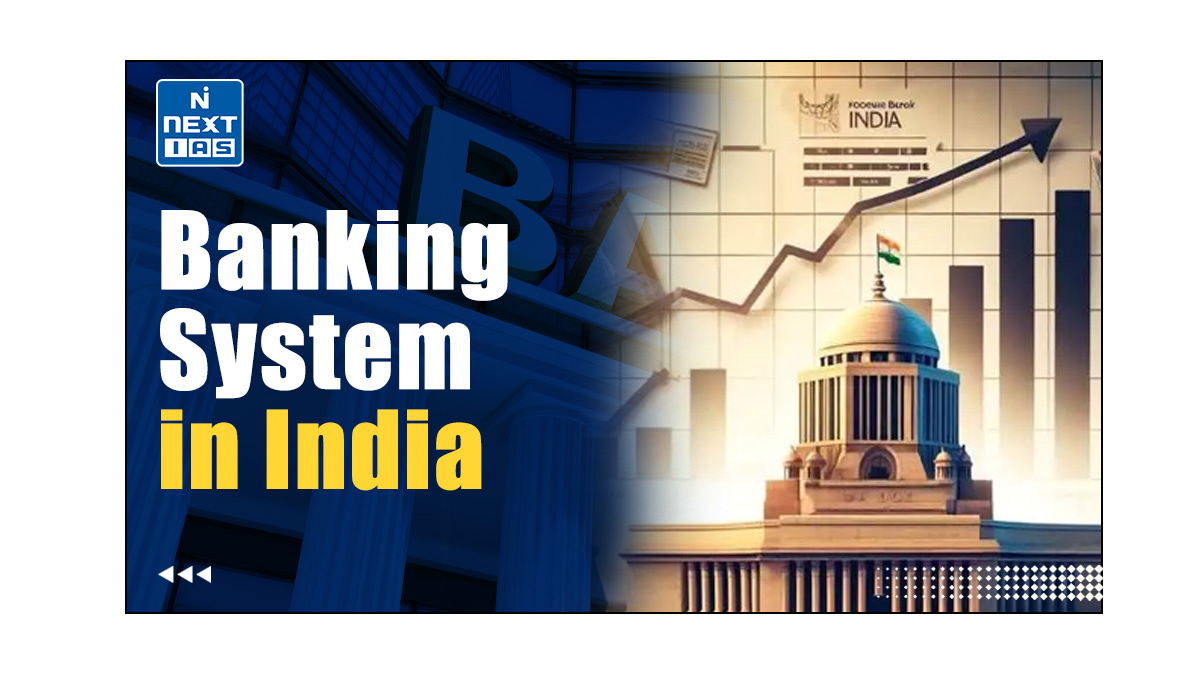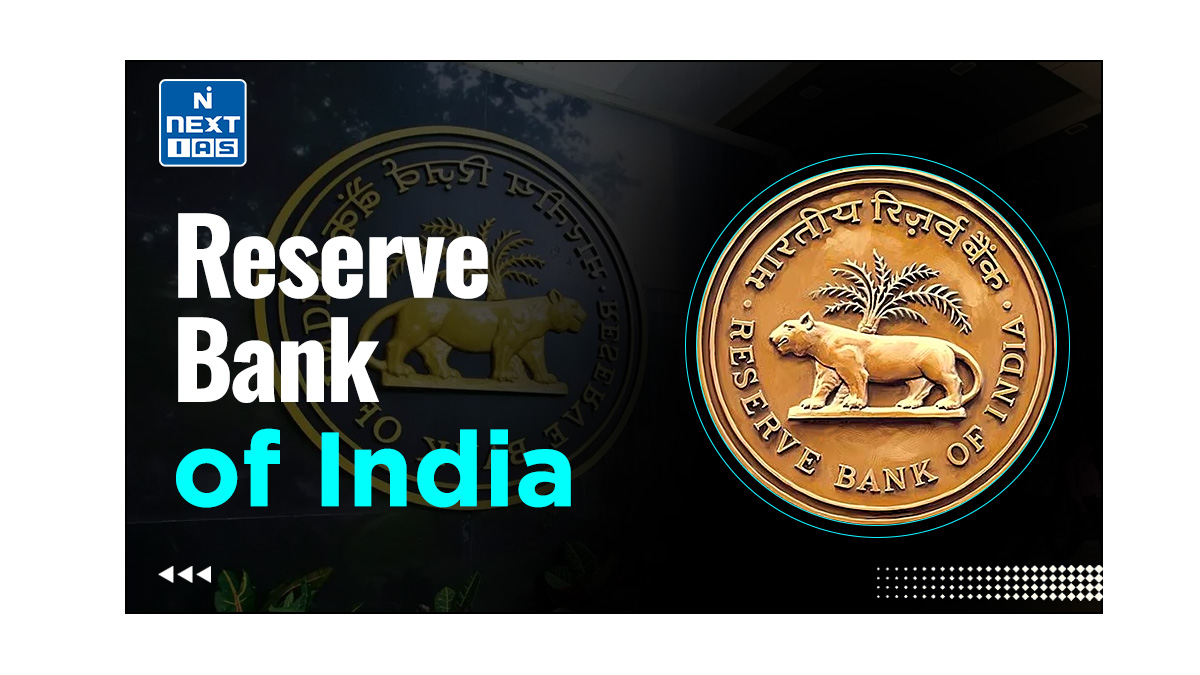
Bad Bank has emerged as a potential solution to India’s persistent problem of Non-Performing Assets (NPAs). As a dedicated entity to manage and resolve bad loans, it has made important efforts towards the resolution of stressed assets. This article aims to study in detail the concept of Bad Bank, its meaning, needs, evolution, framework, achievements, concerns, and other related concepts.
What is Bad Bank?
- The Bad Bank is a specialised Asset Reconstruction Company that purchases NPAs from Banks and restructures them.
- It is not involved in lending and taking deposits but helps commercial banks clean up their balance sheets and resolve bad loans.
- The takeover of bad loans is normally below the book value of the loan and the bank tries to recover as much as possible subsequently.
- It has often been touted as a magic bullet for reducing NPAs, improving Banks’ Balance sheets, unlocking banks’ capital, increasing the Credit creation and consequently, a way out of the vicious economic cycle created due to the Twin Balance Sheet (TBS) problem.
Evolution of Bad Bank in India
- The Economic Survey 2016-17 had recommended setting up Centralised Public Sector Asset Rehabilitation Agency (PARA) as Bad Bank to address the growing problem of NPAs.
- The budget 2021 proposed an Asset Reconstruction Company (ARC)-Asset Management Company (AMC) structure, wherein the ARC will aggregate the debt, while the AMC will act as a resolution manager.
Need for Bad Bank in India
- Economic Recovery: With the pandemic hitting the banking sector, the RBI fears a spike in bad loans in the wake of a six-month moratorium it has announced to tackle the economic slowdown.
- Government Support: Professionally-run, funded by the private lenders and supported by the government, can be an effective mechanism to deal with Non-Performing Assets (NPAs).
- The presence of the government is seen as a means to speed up the clean-up process.
- Rising NPAs: The K.V. Kamath Committee noted that corporate sector debt worth ₹15.52 lakh crore has come under stress after COVID-19 hit India, while another ₹22.20 lakh crore was already under stress before the pandemic.
- This staggering number of NPAs has led to the Twin Balance Sheet Problem in India.
- International Precedents: Many other countries had set up institutional mechanisms to deal with a problem of stress in the financial system.
Framework for Bad Bank in India
For resolution of huge NPAs (Non-Performing Assets) in the Indian Banking sector, the Government of India has set up the following two new entities to acquire stressed assets from banks and then sell them in the market.
National Asset Reconstruction Company Limited (NARCL)
- NARCL has been incorporated under the Companies Act and has applied to the Reserve Bank of India for a license as an (ARC).
- NARCL will acquire stressed assets worth about `2 lakh crore from various commercial banks in different phases.
- Public Sector Banks (PSBs) will maintain 51% ownership in NARCL.
Read our detailed article on:
India Debt Resolution Company Ltd (IDRCL)
- Another entity, India Debt Resolution Company Ltd (IDRCL), will then try to sell the stressed assets in the market.
- PSBs and Public Financial Institutes (FIs) will hold a maximum of 49% stake in IDRCL. The remaining 51% stake will be with private-sector lenders.
- The NARCL-IDRCL structure is the new bad bank structure.
Arguments in Favor of Bad Bank
- Improvement in the balance Sheet of the Banks due to a decrease in the NPAs.
- Unlocking of the capital that was earlier locked up as provisioning requirements. This would lead to increase in the credit creation.
- Enable the Bank to focus on their core areas of accepting deposits and lending loans. The function of recovery of bad loans gets transferred to the bank, specialised in this work.
- Address the problem of coordination and delays in the recovery of NPAs by multiple Banks. Setting up of such a Bank would enable multiple Banks to transfer their NPAs simultaneously to them and improve their balance sheets.
Arguments Against Bad Bank
- Moral Hazard: Taxpayer’s money would be used to bail out inefficient Banks. Guaranteed takeover of NPAs by such banks may prevent Banks from exercising due caution before giving loans.
- Pricing of NPAs: If the NPAs are sold at higher prices to bad banks, such Banks themselves would fail. If NPAs are sold at lower prices, the Banks would be required to take higher haircuts.
- No Substantial Impact: Merely leads to transfer of Bad Assets from one entity to another.
- No long-term Impact: Does not address the core underlying problems which led to increase in NPAs in first place Without governance reforms, the Public sector banks (accounted for 86%, of the total NPAs) may go on doing business the way they have been doing in the past and may end up piling-up of bad debts again.
- International Experience: As seen in Sweden, such Banks works best in case of NPAs in small value housing loans. However, in case of India, the NPAs are present across multiple sectors.
- Financing: Difficult to mobilise finances for setting up such Banks. Finding buyers for bad assets in a pandemic hit economy will be a challenge, especially when governments are facing the issue of containing the fiscal deficit. Thus, setting up of such Banks would only be a superficial and band-aid solution to long-term problems.
Conclusion
The Bad Bank is a significant step towards addressing the long-standing problem of NPAs. While challenges remain, its successful implementation can have a positive impact on the overall health of the banking system and the economy. The government’s continued support and the ability to overcome hurdles will be key to their success.
GS - 3





